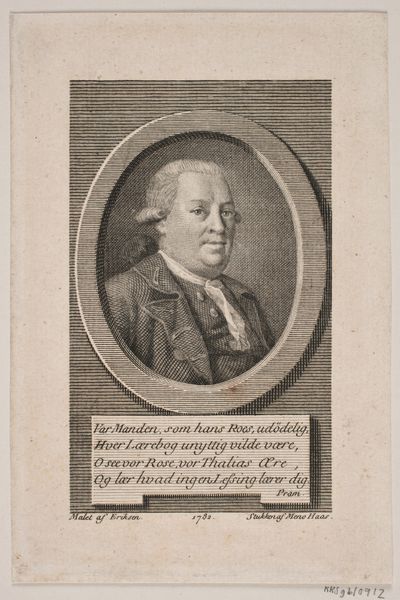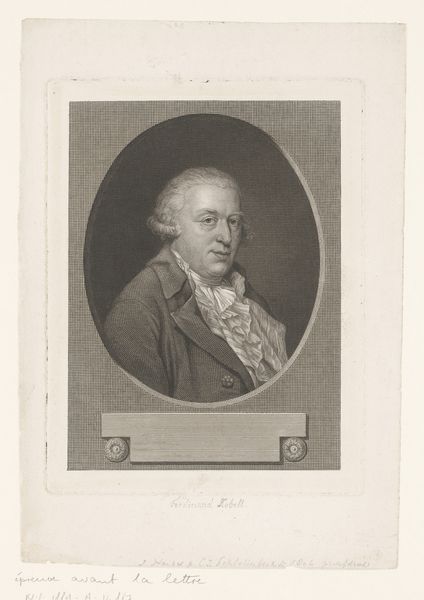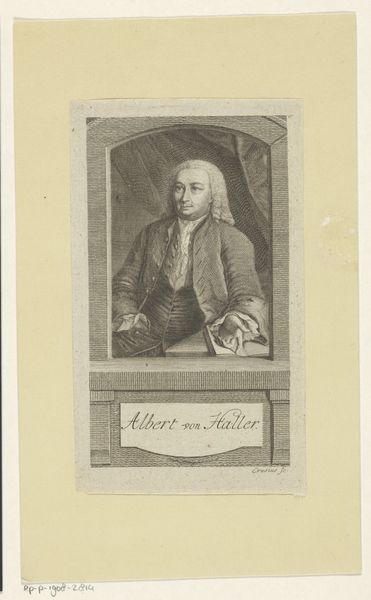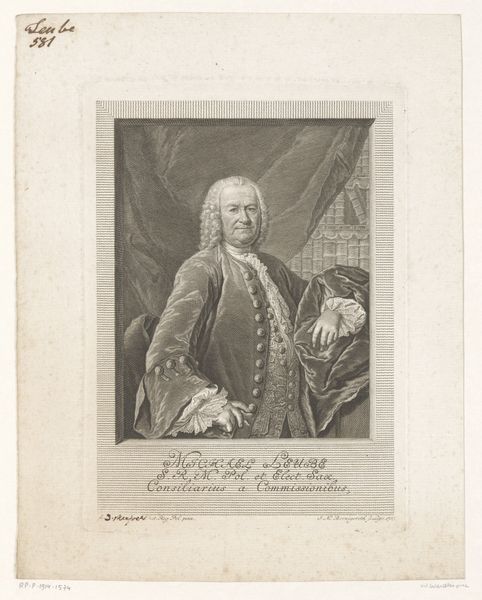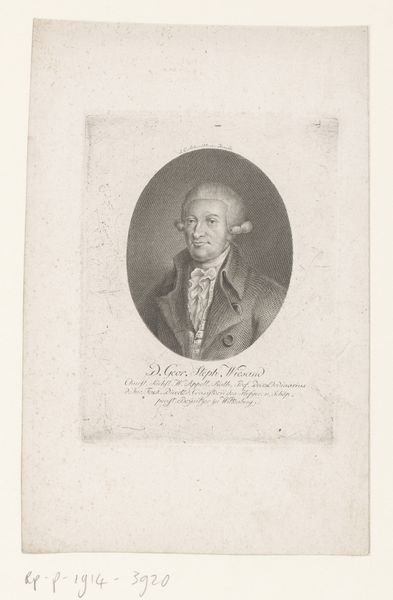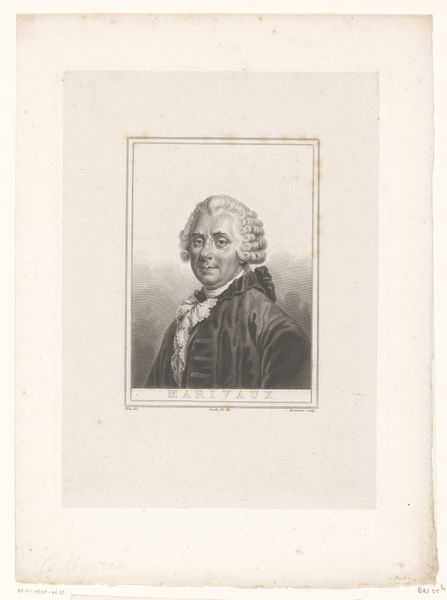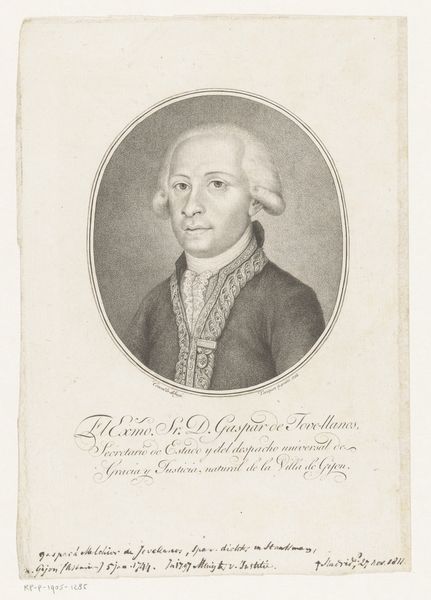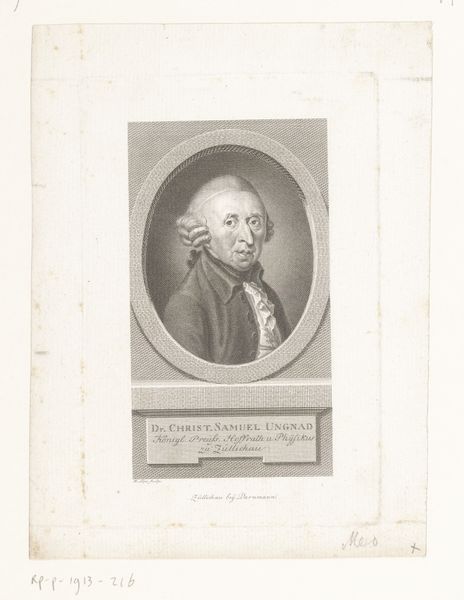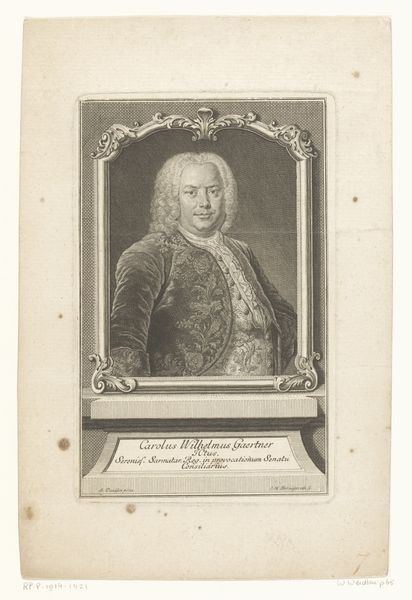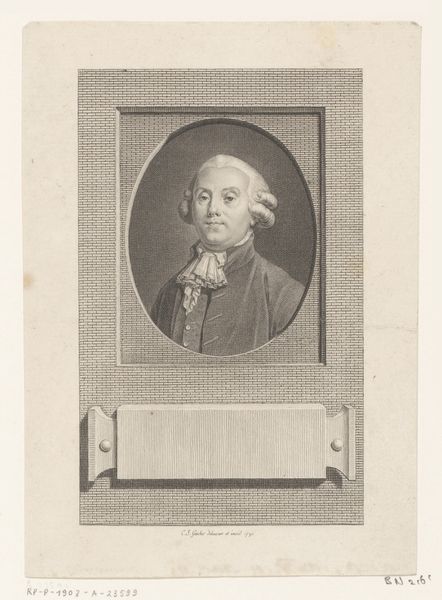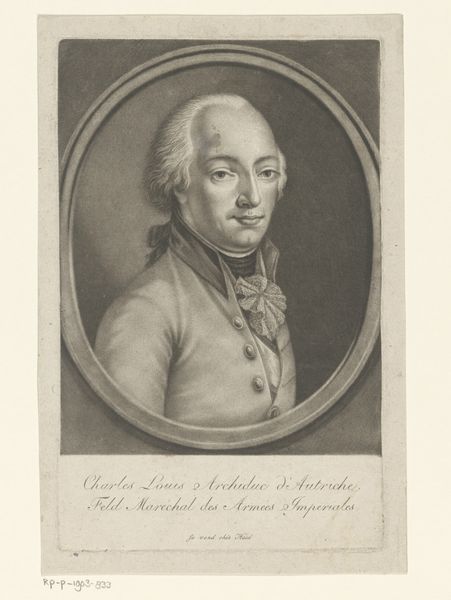
paper, engraving
#
portrait
#
baroque
#
paper
#
history-painting
#
engraving
Dimensions: height 176 mm, width 105 mm
Copyright: Rijks Museum: Open Domain
Editor: This is a rather formal engraving, “Portret van Gottlieb Wilhelm Rabener,” made in 1753 by Johann Martin Bernigeroth. It's on paper, currently held at the Rijksmuseum. It's interesting to see the texture achieved through the engraving, almost like a photograph. What's your interpretation of this portrait? Curator: Seeing this portrait, I immediately consider the context of the Enlightenment and the rising merchant class. Bernigeroth captures Rabener, a satirist, not as an aristocrat, but as a man of intellect and wit. Consider how portraits served as tools for social mobility at the time, reinforcing or reshaping identities. How does this depiction challenge or conform to social expectations of the era? Editor: It seems like a pretty standard depiction of someone of status, wearing a wig, lace, a fancy jacket. Curator: Yes, there are those trappings of status. But what does it mean to portray a satirist in this way? Rabener used his wit to critique the very social structures these garments represent. The image becomes an intersection, doesn't it? Status versus social critique. Think of his satirical writings – are they reinforced or undermined by the formality of this depiction? Editor: That’s a great point! I never would have thought about it like that. It’s like the portrait itself is engaging in the same social commentary as his writing. Curator: Precisely. And what about the artist? Where did he stand, depicting this man this way? What political climate did they negotiate by commissioning this artwork? So many stories in one image. Editor: Thanks, I'll definitely look at these kinds of portraits with new questions now.
Comments
No comments
Be the first to comment and join the conversation on the ultimate creative platform.

